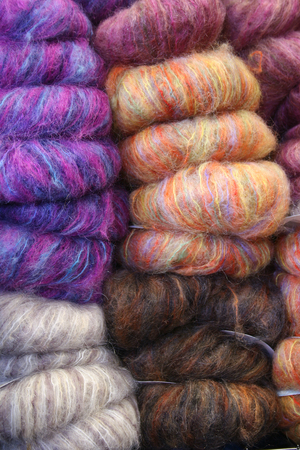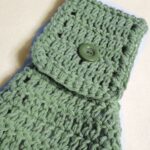Crochet is a big business, and avid crocheters are always looking for something new to inspire their creativity. This is good news, since it means there’s a constant market for patterns – if you’re a crafter and want to see your ideas published, there’s no time like the present to get started.
Before you even get going, take a deep breath and relax. Know now that you will probably stress out at least once, and several times you’ll kick yourself believing that your ideas aren’t “good enough”. Don’t let self-doubt stop you. Instead, take it as a sign that you need a break. Go do something completely un-crafty, clear your mind, and come back to your project refreshed.
Anyone with an ounce of creativity can have their crochet patterns published. Want to make a bigger mark than just “anyone“? Good! Everything you need to know to professionally create your crochet pattern and get it published is in this guide.
Writing a Professional Crochet Pattern
Regardless of where you want your pattern to end up, there’s no doubt that you want it to look as nice as it possibly can. You want it to be professional, easy to read, and useful.
Not a problem – you just need to follow a few steps.
1. Grab a template – Yes, anyone who has read much of my articles already know that I’m big on templates. Seriously though, if someone has already done the work in a nice-looking way, why spend your valuable time doing the same thing when you can work off of what they’ve been nice enough to create?
Another reason that templates are great in writing crochet patterns is that they serve to remind you what pieces need to be created. While I could say that you’ll need a list of materials, clear steps, and pictures, it’s much easier to remember these items and visualize how they’ll work when you’re looking at a pattern template that they’ll plug into.
You can download a free crochet pattern template I have compiled (right-click and choose “Save As”, or simply click to preview), or if you’re really set on the idea of creating your own look you can create your own template. Just be sure to reference published layouts in magazines, books, or online as you work.
2. Compile items – With the exception of the actual instructions (we’ll get to them), you’ll want to go through your pattern template item-by-item and make sure you have everything covered. Basically, you’ll want to at least consider including the following elements: Photos, Materials, Special Stitches Used, Pattern Notes, Schematics (diagrams), Bio, and Standard Abbreviations.
At the very least, you’ll need to jot down all the materials you’ve used to create your project – what type and amount of yarn you used, the size of the crochet hook, and “extras” like buttons if they’re needed. Be as detailed as possible.
3. Basic Instructions – When writing a crochet pattern, your basic instructions will usually take on the form of notes you jot down as you create the “model”. For your own sanity, dedicate a notebook to your crochet designs and use it only for that purpose. Keep it right with your yarns and hooks and you’ll be set.
The basic instructions are just for you. They’re not polished, they’re usually messy, and often contain abbreviations only you would ever know the meaning of. No biggie – as long as you can read it, you’ll be able to polish it while you type it up.
4. Detailed Instructions – After you’ve created a model (or two … or ten) and are satisfied you’ve got all the stitches counted and all the rows numbered, you’re ready to take your messy basic instructions to the template and type them in.
Give plenty of detail in your instructions – don’t make it any harder to follow the pattern than you have to. If you’re going to publish the pattern at a site like Associated Content, consider using no abbreviations at all. This allows the very beginning crocheter to follow your pattern without pulling their hair out in frustration. Want to publish the pattern with a magazine, book, or start your own website collection? Use standard abbreviations that most experienced crocheters already know and understand how to read.
If a particular step is just plain confusing, provide suggestions on how to prevent errors. Keep the pattern clutter-free and to the point. Any photos or illustrations you can offer up make it much easier for the reader to follow your instructions, and will make you a much more popular designer.
5. Test It – Once your pattern template is all filled out and looking gorgeous, it’s time to test it out. If you’re pressed for time, go ahead and test it yourself. You want to be able to follow all of the instructions exactly as they’re written. The better way to test your patterns, though, is to ask a fellow crochet lover to try them out for you. You’ll want to know that it’s easy to read, easy to follow, and that the finished product turned out the same (or as close as human error can allow) as the pictures of yours did.
Publishing Crochet Patterns
Yay! You’ve got to admit, there aren’t many feelings that compare to this … that moment when you’ve got a beautifully printed pattern that you created sitting right next to a finished project that you’re seriously proud of. It’s very, very cool.
But it gets better.
Once you’ve tried and tested your pattern a few times, adjusted anything that needed to be, and triple-searched your work for typographical errors, you’re ready to submit the pattern for publication. Don’t panic – it’s really not as scary or as difficult as you might have been lead to believe.
You have several options when it comes to publication. What you decide to go for will depend on your pattern, your experience, and simply what you feel is the right idea for you at the time.
Option One: Crochet Pattern Websites
If you’re just starting out, there’s no better place to test the waters than with a few websites. Because crochet is such a strong business, there’s always a website or e-newsletter looking for original work.
This is the option that will usually result in publication for no pay. If you look at it realistically, though, it’s not a big deal – exposure and experience are worth a lot more than you can put money on.
Associated Content – If you’ve not checked out this website for publishing your own work, you definitely should. When you come up with a few really great patterns, you can submit them here for pay.
Crochet Me! Magazine – An online crochet magazine that publishes really creative, quality crochet patterns. This one won’t earn you any cash, but it will give you a lot of exposure.
Option Two: Crochet Pattern Magazines
Seeing your work in print is a feeling of accomplishment that can soon become addictive. Add to that the fact that your words and images are on bright, glossy pages and the feeling is even better.
When considering submitting your crochet patterns to magazines, make sure that you read the submission guidelines very carefully. Most of the magazines run on themes, usually surrounding a holiday or the season. If you request guidelines, the editors are usually kind enough to send you a publication calendar that shows a full year of what types of patterns the magazine is looking for.
Crochet World – Crochet World comes out once every other month and features amazing work by crochet designers.
Annie’s Favorite Crochet – Annie’s Attic is a name known throughout the crochet world, and this is one of their flagship magazines.
Option Three: Crochet Pattern Books
When you’re ready to shoot for the stars, you’ll want to consider having your crochet patterns published with a more “traditional” publisher. If accepted, your work will appear in pattern books that are available right from your local craft store.
Maggie’s Crochet – Another big name in crochet, Maggie’s Crochet has started a new program that welcomes cute single projects instead of a series fit for a larger book.
Leisure Arts – Many people consider being published by Leisure Arts a pinnacle of achievement in crafting. They welcome both single designs and series.








